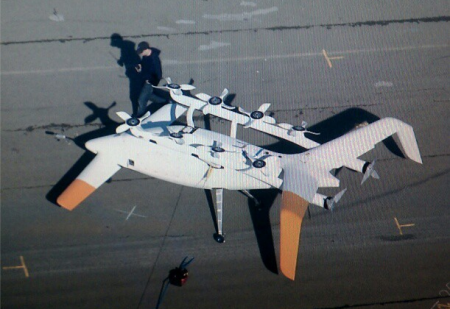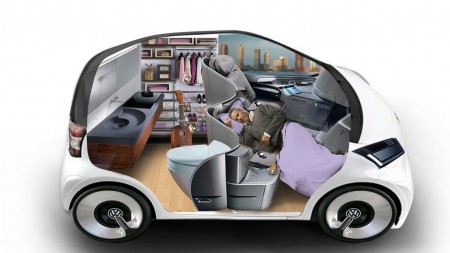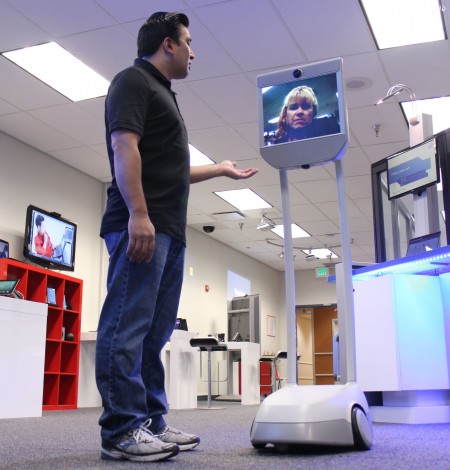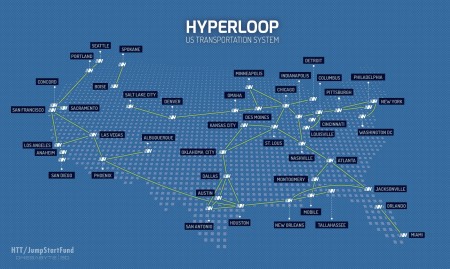June 28, 2015 – In his latest email blast Peter Diamandis talks about four revolutions in transportation that he expects will take place within this decade. These include: autonomous vehicles, telepresence robots and virtual worlds, hyperloops and point-to-point aerial transport. I think you will find what he has to say of great interest.
———-
In 2011 Peter Thiel famously said, “We wanted flying cars, instead we got 140 characters….” Guess what? The flying car is coming and so is a lot more.
Autonomous Vehicles
Autonomous cars are coming and coming fast. Every major car company has autonomous cars under development. By 2035 it’s expected there will be more than 54 million autonomous cars on the road, and this will change everything. How?
- Saved Lives: There are 1.2 million people killed every year in car accidents. Autonomous cars don’t drive drunk, don’t text, don’t have Alzheimer’s and don’t fall asleep at the wheel.
- Reclaimed Land: You can fit eight times more autonomous cars on our roads, making their use more efficient. In Los Angeles it’s estimated that more than half of the land in the city belongs to cars in the form of garages, driveways, roads, and parking lots.
- Saved Energy: Today we give close to 25% of all of our energy to personal transportation, and 25% of our greenhouse gases are produced by and for cars.
- Saved Money: The need to own a car, pay for insurance and parking, it all goes away. Trade out your 4,000-pound car for lighter electric cars that you can call when you need them, that don’t crash, and you can expect to save 90% on automotive transportation every year.
Best of all, you can call any kind of car you need, when you need it. Need a nap? Order a car with a bed (see Volkswagen-Trimaran concept below). Want to party? Order one with a fully-stocked bar. Need a business meeting? Up drives a conference room on wheels.
Telepresence Robotics and Virtual Worlds
In the U.S. alone, business travel spending will top $310 billion in 2015 (Global Business Travel Association), amounting to 490.4 million business trips. The idea of having to schlep your physical body from one location to another for meetings will soon be old-school. Instead you’ll plug into a virtual world, or use a Beam robot (see image below) to create virtual presence. Facebook, Google, Microsoft, Sony, HTC and Suitable Technologies are already spending billions of dollars to develop the hardware and perfect the experience.
Beyond the advantage of saving serious cash and time flying from LA to NY, meeting someone “in person” will ultimately be disadvantageous. When I’m speaking to you over a virtual link or through a telepresence robot, I will be able to watch your pupillary response, pull up and recall facts about previous conversations and enrich my interaction with you in countless ways.
In the next decade, you will attend conferences, meetings, interviews, keynotes and maybe even dates through telepresence and sometimes in virtual worlds. Just the advantage of avoiding a full cavity search courtesy of airport TSA makes this technology worth it.
For me, I have 15 Beam robots between my offices at XPRIZE (Los Angeles), Singularity University (Mountain View), Human Longevity Inc. (San Diego), and Planetary Resources (Seattle). In a single day, I’ll routinely hop between four cities with a click of a button.
Hyperloop
A few years ago, California proposed (and passed) a $69 billion high-speed rail between Los Angeles and San Francisco. In response, Elon Musk (founder of Tesla, SpaceX) published a paper on a conceptual transportation system called the Hyperloop that was, “a cross between a Concorde, a rail-gun, and an air hockey table,” and that could be built at 10% of the cost of the high-speed rail.
Well guess what? — Hyperloop is now in design and under construction. When it works it will transport people and cargo between cities at speeds faster than a commercial airliner (over 700 mph) and do it with record energy efficiency. Hyperloop, which Musk dubs “the fifth mode,” will be faster than an airplane, cheaper than a train and continuously available in any weather while producing no carbon emissions. If people can get from LA to San Francisco in less than 30 minutes, L.A. to Las Vegas in 20 minutes, or New York to Philly in 10, cities become metro stops. Borders evaporate. Housing price imbalances and overcrowding all can be mitigated.
A brilliant team of engineers is hard at work at Hyperloop Technologies, a company founded by investor Shervin Pishevar and former SpaceX Engineer Brogan Bambrogan. I’m proud to be a founding board member along with Shervin, Brogan, Joe Lonsdale (Founder, Palantir & Formation 8), Jim Messina (Pres. Obama’s Reelection Campaign Manager), and David Sacks (PayPal, Yammer).
Point-to-Point Aerial Transport
As alluded to above, some version of the flying car is coming. This is being enabled by the intersection of three converging technologies: high energy density batteries, autonomous navigation powered by differential GPS and lightweight, high strength materials.
The XPrize Foundation is working on a multimillion dollar Transporter XPRIZE to inspire progress in this arena. Various designs are under development by a number of companies focused on the creation of personal transportation machines with vertical takeoff, vertical landing capability. Think of human-carrying electric quadcopters, something you can step into and tell it, “Please take me to downtown L.A.” that then lifts you up, and flies at 500 feet to your destination.
One company, Zee Aero (see picture below), is rumored to be funded by Google. Its flying car can take off and land vertically using a plethora of small electric motors turning four-bladed propellers. And it is narrow enough to fit into a standard shopping center parking space. Another design, E-Volo’s Volocopter, is an electric two-passenger, 18-rotor vehicle.
I call these “flying cars” or “human carrying multi-copters” point-to-point transport. They are a mix between a personal jet pack and your own autonomous, electric on-demand helicopter. For crowded cities, they will be a godsend. But even better, for places like Africa where road infrastructure can be tenuous, especially during the rainy season, these flying cars will be the equivalent of skipping the copper-line phone system and going straight to wireless, something that the continent is already experiencing quite successfully.
———-
Great food for thought on a Sunday afternoon from Peter Diamandis. I can hardly wait to see the XPrize announcement and the designs that come out of the contest. Remember one of Diamandis’ XPrizes gave us SpaceshipOne. Another has given us technologies to save coral reefs, clean up oil spills faster, and even land a robot rover on the Moon where it will pick up a regolith sample and return it to Earth. Cool stuff!












